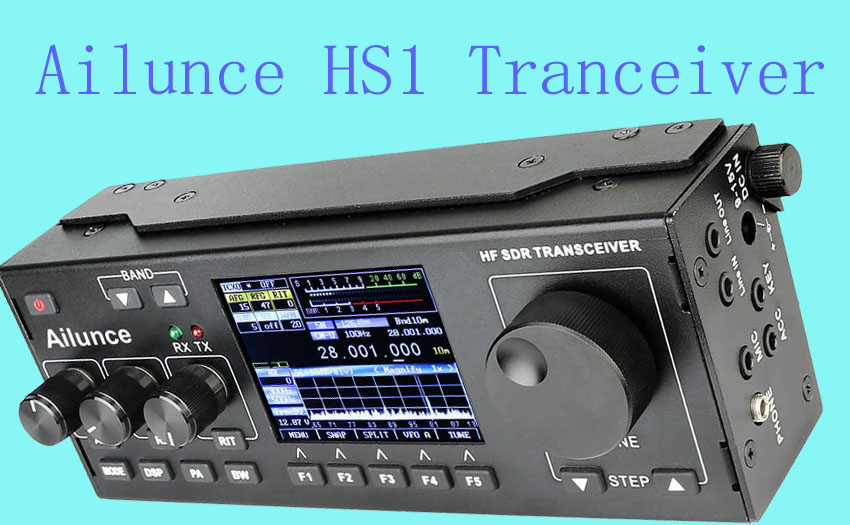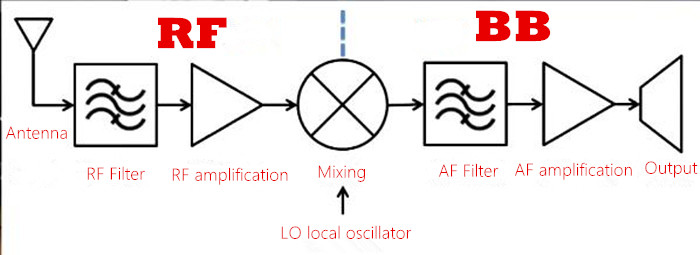+86 15093323284 hams@ailunce.com
How does the receiver process the radio signal?

The radio receiver is a device used to receive radio signals. It can convert the RF signal received by the antenna into a baseband signal. Usually, we know the frequency of RF is very high but the baseband frequency is lower, so it requires the receiver to process. According to different processing ways, radio receivers can be divided into direct-emitting radio receivers and superheterodyne receivers.
Direct-emitting radio receivers
The Direct-emitting radio receivers correspond to the superheterodyne receivers, that is to say, the RF signal is processed directly without frequency conversion. The processing process is shown below.

The process of the receiver starts from the antenna. The antenna receives and converts the signal into the RF signal; filters remove the interference frequency signal through a band-pass or low-pass filter, then amplifies, and outputs a baseband signal after mixing, and then filters and amplifies again, and finally sounds through speakers or headphones.
The direct-emitting radio receivers are the simplest receiving circuit model, so it has a simple structure and is very easy to integrate. but it is susceptible to external interference, such as DC bias and local oscillator leakage.
Superheterodyne receivers
The superheterodyne receiver uses the locally generated oscillating wave to mix with the input signal, converts the input RF signal into an IF signal, and then converts it into a baseband signal for processing. The signal processing process is shown below.

Different from the Direct-emitting radio receivers, the superheterodyne receiver undergoes two mixings, the first is to convert to an intermediate frequency, and the second is to process the baseband frequency.
The super-heterodyne receiver is more reasonable than the direct-amp receiver, it is easy to get a large and stable amplification, the selectivity and frequency characteristics are better, and the adjustment is easier than the direct-amp receiver. However, the superheterodyne receiver must use a filter with good frequency selection characteristics, and it can only be implemented off-chip, so the integration is difficult. At the same time, superheterodyne receivers also have complicated circuits and problems such as mirroring, combined frequency, and intermediate frequency interference.











